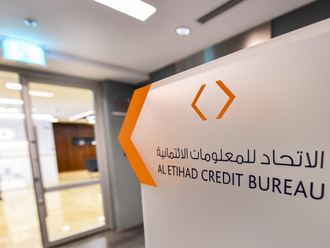Those who remember the dawn of the DVD era will recall how the geeks finally had their day. That’s because you had to be a geek to be able to understand the multiple geographic and other formats in which DVDs were coded and play them on your machine. You had to be a geek simply to be able watch a home movie.
Today, when we want to watch a movie, we just click “play” and expect to be entertained.
Ubiquity is an important component of new technology. We no longer carry two phones for two countries, or lug around a DVD player from one country to another. However, the jury is still out on payment systems with universal acceptance.
The exploding universe of new payment channels today includes various phone manufacturers, internet companies, banks, payment processors … all knocking for entry into the consumer’s mobile wallet. For consumers to adopt mobile payment systems, it’s essential that there be one brand agnostic platform, approved and regulated by the Central Bank, following global best practice and open to innovative updates.
A holistic interface
Ultimately, consumers will gravitate towards one holistic interface, or one unified ‘überapp’. Here über is used in the original, German sense of an overarching, meta abstraction greater than the sum of its parts.
The taxi aggregator Uber has achieved this by becoming the go-to app across the world, where regional variants are now described as the Uber of the Middle East or the Uber of India.
What does it take to achieve über status? One aspect is convenience. When it started out in the US, Uber was simply the ability to call a taxi without physically getting out there. Then it morphed into a cultural thing where you appeared at every gathering as if you were being chauffeured there. The concept worked because it afforded people some sense of control over their ride; it sure beat competing for a cab on the pavement.
Mobile payments, on the other hand, are still being driven by the marvel associated with technology rather than the convenience. In a way, payment technology is where Sony was when it launched Betamax in 1975 — very excited by the ability to record stuff, even if it was for only 60 minutes, not realising that consumers would likely jump at the three-hour VHS tapes.
The convenience wrap
Uberisation would bring together a whole lot of convenience factors — payments cards, loyalty cards and multiple accounts — onto a single platform, pretty much the way a real-world leather wallet does. Convenience factor
If an app today could integrate all of my cards so that each time I check into a hotel, it would automatically show the reward points from the booking, for instance, that would have real value. I don’t want to carry around 30 cards not knowing which hotel I’m checking into. Similarly, when you book an airline ticket online, it asks if you would also like to upload your frequent flyer number and displays your points status. The convenience factor is in bringing all these things together.
The future of payments is perhaps to not morph into mere transactions but also provide all of these value-added services. It’s the app with the nous to know that with this purchase you now qualify for a free soda, or dinner, or lunch; it’s the ability to aggregate information that I don’t readily have at hand.
Again, the technology is available. For instance, we already have the ability to simply click a picture of your card with our phone cameras to input the 16-digit number into a payment interface. The magic happens when this is integrated seamlessly into a payments process and into your digital wallet.
International payments
Wallets themselves need to be more ubiquitous. Currently, each mobile wallet is either tied to a bank, a payments processor, a digital store or a company. A regional wallet may not facilitate international payments. Wallets by one payments processor may not accept ingress from another. For the consumer today, it’s akin to not being able to play a US-rated DVD on a player made in India.
Just how many wallets is a customer expected to carry on the phone? After all, space is precious and the customer would rather use it to store another Bob Dylan song.
Ultimately, the consumer will want a single, absolute, device agnostic app. As the consolidation continues, we have to wait and watch which payments app is going to be what Cadbury is to chocolate, Xerox is to photocopying or Kraft is to cheese. The Uber of payments, as it were.
Bhairav Trivedi, Group CEO of Network International












